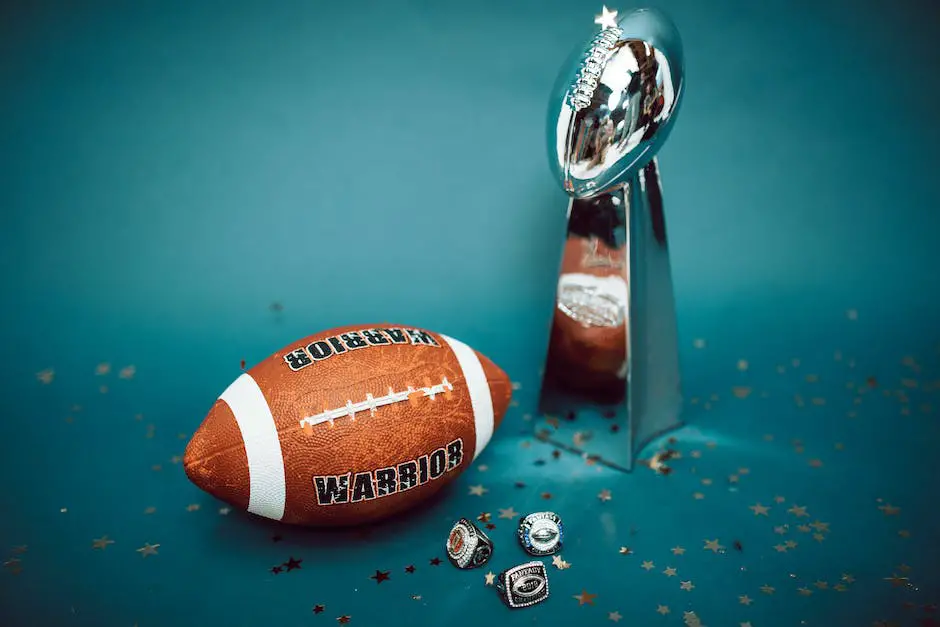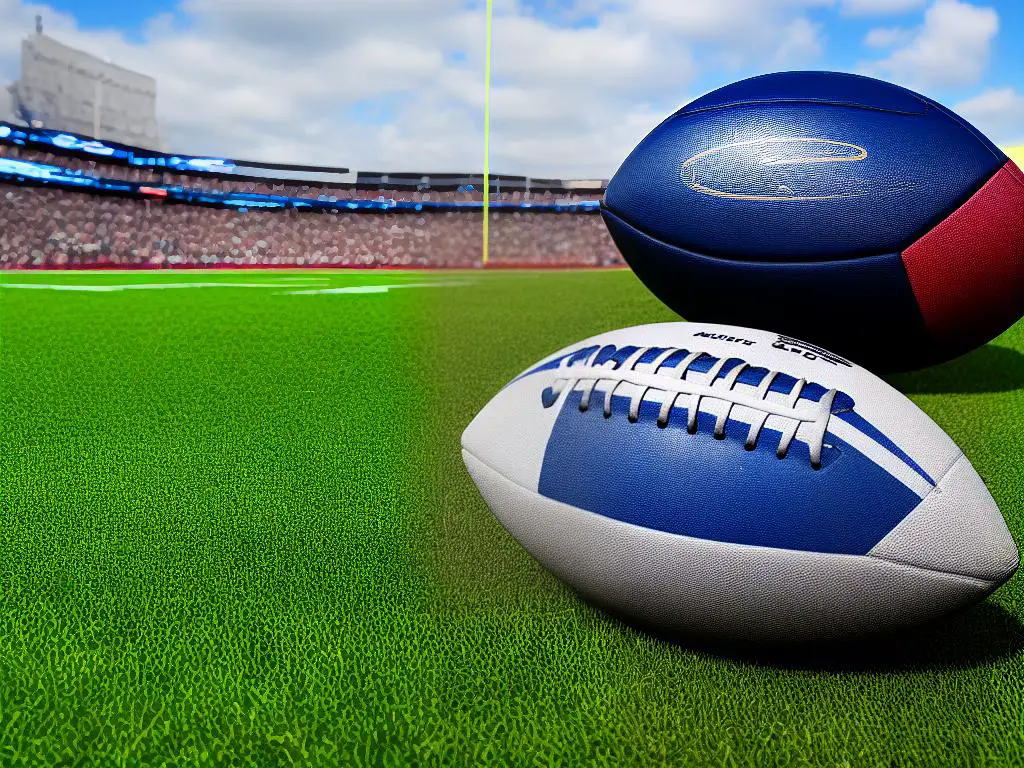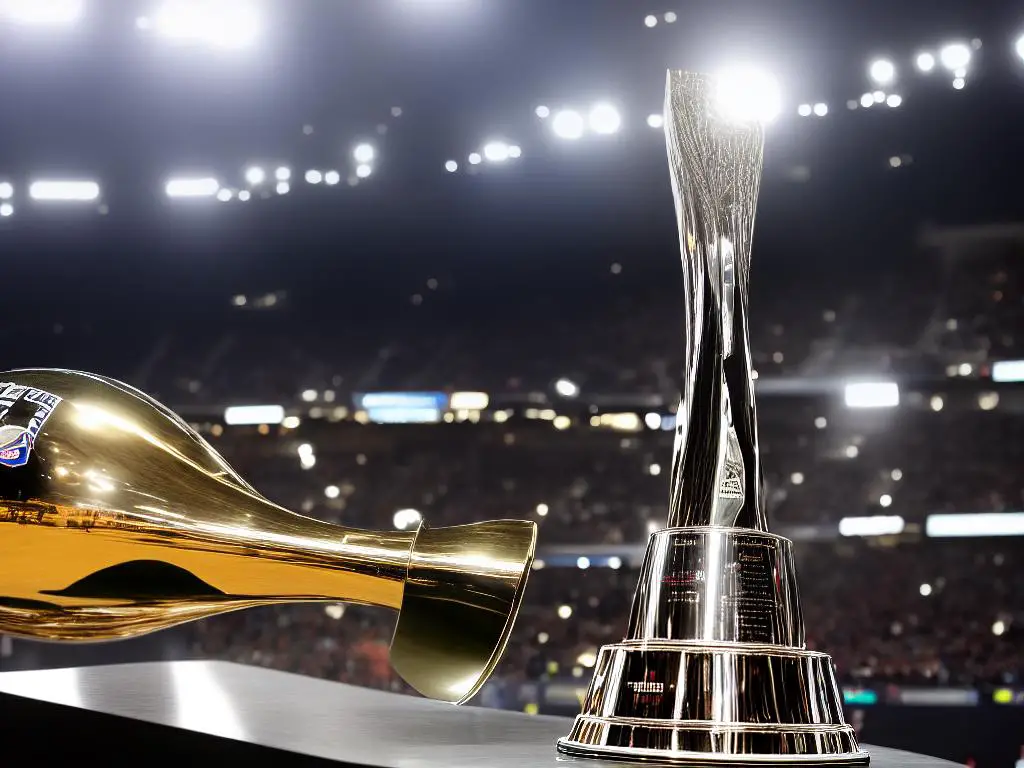Super Bowl History: Unforgettable Moments & Facts
Super Bowl Sunday has become an unofficial American holiday, celebrating the culmination of a season’s worth of gridiron competition and providing a spectacle unlike any other in sports. Every year, fans eagerly anticipate the game’s thrilling moments, unforgettable halftime performances, and the iconic commercials that redefine advertising standards. Delving into the rich history, from its humble beginnings in the mid-1960s to the colossal event it is today, the Super Bowl has undeniably left an indelible mark on American culture and beyond.
Origins of the Super Bowl
The Origins of the Super Bowl
The origins of the Super Bowl date back to the National Football League (NFL) and American Football League (AFL) merger in 1966. During the 1960s, the NFL faced a rival pro football league in the form of the AFL, which was founded in 1960. The competition between the two leagues for fans, television viewership, and top players brought about significant financial strain on both leagues. Eventually, the need for a stronger and unified football league led to the historic NFL-AFL merger agreement on June 8, 1966.
The First Super Bowl
The merger agreement stipulated that the two leagues would combine to form one league with two conferences, the National Football Conference (NFC) and the American Football Conference (AFC), by 1970. In the meantime, both leagues agreed to hold a championship game at the end of each season, in which the winners from both conferences would face off to determine the ultimate football champion. The championship game was called the Super Bowl, with the first edition taking place on January 15, 1967.
Super Bowl I, officially known as the AFL-NFL World Championship Game, featured the NFL’s Green Bay Packers and the AFL’s Kansas City Chiefs. Played at the Los Angeles Memorial Coliseum, the Packers emerged victorious with a score of 35-10. The Packers’ quarterback, Bart Starr, was named the game’s Most Valuable Player (MVP). The initial Super Bowls were not yet the cultural phenomenon that they are today, with Super Bowl I not even selling out the stadium and being broadcast on two television networks.
The Growth of the Super Bowl
As the years progressed, the popularity of the Super Bowl skyrocketed, with the event becoming a cultural celebration in the United States. Innovations in television broadcasting, such as instant replay, also helped to showcase the spectacle and high level of competition on the field. Moreover, the halftime shows and commercials that accompanied the games became significant attractions in their own right, with companies paying large sums of money for advertising slots and big-name celebrities performing during the intermissions.
The Super Bowl Today
For more than five decades, the Super Bowl has become synonymous with unforgettable moments, iconic games, and memorable halftime shows. This annual championship game showcases the tenacity, competitiveness, and prowess of football players and their teams. The Super Bowl has successfully etched its place in the hearts of sports enthusiasts and firmly engraved itself as an essential component of American culture.

Iconic Super Bowl Games
Super Bowl III: A Historic Turning Point
Super Bowl III, staged on January 12, 1969, still stands as one of the most iconic games in Super Bowl history. This epoch-making event witnessed the New York Jets, led by their audacious and self-assured quarterback, Joe Namath, squaring off against the overwhelmingly favored Baltimore Colts. Namath, fearlessly and infamously, guaranteed a Jets victory, even though the Colts were tagged as 18-point favorites. True to his promise, Namath steered the Jets to a stunning 16-7 victory, ending in one of the greatest upsets in sports history. This game subsequently became the catalyst for the historic NFL-AFL merger.
Super Bowl XLII
One of the most exciting Super Bowls in history took place in 2008, when the New England Patriots squared off against the New York Giants in Super Bowl XLII. The Patriots entered the game with an undefeated 18-0 record and were heavily favored to win. The game was a defensive battle, with the Giants and Patriots trading blows until the final minutes. With the Patriots leading 14-10, Giants quarterback Eli Manning led a desperate game-winning drive that included a miraculous catch by wide receiver David Tyree, who pinned the ball against his helmet while being tackled. The Giants would go on to win the game 17-14, shattering the Patriots’ hopes for a perfect season.
Super Bowl XLIX
Another iconic Super Bowl game was played on February 1, 2015, which featured the New England Patriots and the Seattle Seahawks in Super Bowl XLIX. The game was a back-and-forth affair, with both teams showing their offensive and defensive prowess. However, the most notable moment of the game came in the final minute when the Seahawks, rather than running the ball with star running back Marshawn Lynch, opted to pass on second and goal from the one-yard line. Patriots rookie, Malcolm Butler, intercepted the pass, sealing a 28-24 victory for New England and initiating widespread debate over the Seahawks’ controversial play call.
Super Bowl LI
Super Bowl LI, held on February 5, 2017, showcased one of the most jaw-dropping comebacks in sports history. The New England Patriots, led by quarterback Tom Brady, faced off against the Atlanta Falcons, who boasted a high-powered offense. The Falcons raced to a 28-3 lead, appearing to have the game in hand. However, Brady and the Patriots refused to give up, scoring 25 unanswered points to send the game into overtime – the first time in Super Bowl history. In overtime, the Patriots completed the improbable comeback, scoring a touchdown to win the game 34-28, earning Brady his fifth Super Bowl title and solidifying his place as one of the greatest quarterbacks of all time.

Super Bowl Halftime Shows
Super Bowl Halftime Shows Through the Decades
As a complement to the unforgettable moments on the field, such as the Patriots’ incredible comeback during Super Bowl LI, the halftime shows have also grown in prominence and excitement over the years. What began with simple college marching band performances in the 1960s has evolved into a massive celebration of music and culture headlined by top-tier artists from around the world. Today, the announcement of the halftime performer is anticipated nearly as much as the high-stakes games themselves, creating another enthralling aspect of Super Bowl history to which fans eagerly look forward.
Michael Jackson’s Iconic 1993 Performance
One of the most iconic Super Bowl halftime show performances is Michael Jackson’s 1993 appearance at Super Bowl XXVII. With an elaborate stage setup and an array of dazzling special effects, the King of Pop captivated audiences worldwide with a thrilling medley of his greatest hits. His performance is hailed as a game-changer for Super Bowl halftime shows, as it marked a clear shift towards featuring high-profile celebrities and elaborate productions.
Prince’s Legendary 2007 Performance
Prince’s legendary 2007 performance at Super Bowl XLI is another memorable moment in halftime show history. The artist took the stage during a torrential downpour, powering through the soaked stage and electric guitars to deliver an unforgettable rendition of “Purple Rain.” This electrifying display exemplifies the kind of unexpected magic that can arise from bringing top musicians to the Super Bowl stage.
Beyoncé’s Game-Changing Performances
In recent years, Super Bowl halftime shows have continued to push the envelope, featuring groundbreaking and sometimes controversial performances. Beyoncé’s 2013 and 2016 appearances are prime examples of this. In 2013, she delivered an explosive medley of hits, eventually reuniting with her Destiny’s Child bandmates for a nostalgia-inducing portion of the show. During her 2016 performance, however, Beyoncé made headlines with her politically charged tribute to the Black Panthers – a moment that demonstrated the halftime show’s potential to transcend entertainment and spark powerful conversations.
Lady Gaga’s Aerial Stunt
One of the memorable moments in Super Bowl history was Lady Gaga’s 2017 halftime show performance. The artist descended from the roof of the stadium in a spectacular aerial stunt before launching into a medley of her hits. This combination of theatricality, special effects, and high-energy performances exemplifies the modern Super Bowl halftime show and sets the stage for future stars to continue pushing the boundaries of what is possible during this iconic annual event.

Super Bowl Commercials
Introduction to Super Bowl Commercials
Beyond the halftime show, Super Bowl commercials have grown into a phenomenon in their own right, almost as highly anticipated as the championship game itself. Known for being an extravagant and high-stakes advertising event, many companies strive to create the most creative, humorous, or heartwarming commercials to capture the attention of America’s viewers during the event. The significance of these commercials in American culture is undeniable, as they often spark conversations and become reference points for popular culture. Due to the staggering viewership and large audience, the Super Bowl has evolved into a significant advertising platform, and companies are willing to spend millions of dollars for a 30-second commercial slot.
History
Since the first Super Bowl in 1967, commercials have played an integral part in shaping the game’s history and tradition. Over time, various ad campaigns have become memorable and considered classics. One notable example is Apple’s “1984” advertisement for the launch of their Macintosh computer. Directed by Ridley Scott, the ad showed a dystopian society that could only be freed by the introduction of the Macintosh. Aired during the third quarter of Super Bowl XVIII, this groundbreaking commercial has been credited with setting the bar for innovative and iconic ads during the big game.
Memorable commercials
Another memorable ad campaign in Super Bowl history is Budweiser’s series of commercials featuring the famous Clydesdale horses. In particular, the 2002 commercial aired after the September 11 attacks tugged on heartstrings and left a lasting impression on many viewers. As the Clydesdale horses pay tribute to the tragedy by bowing their heads toward the New York City skyline where the Twin Towers once stood, the commercial demonstrated that even something as seemingly lighthearted as a Super Bowl ad could tackle such a serious topic while evoking a sense of unity and healing.
- Pepsi has been a longtime Super Bowl advertiser, creating memorable commercials featuring celebrities like Britney Spears, Michael J. Fox, and Cindy Crawford.
- The Coca-Cola commercial featuring Pittsburgh Steelers’ “Mean” Joe Greene and the young fan who gives him a Coke.
- The Wendy’s “Where’s the Beef?” campaign from the 1980s.
- The emotional Google ad from 2020, in which an elderly man remembers moments with his late wife by utilizing Google Assistant.
Impact on American pop culture
Super Bowl commercials, despite their brief appearance during the event, have firmly planted themselves within American pop culture. This can be observed through the anticipation, sneak previews, and in-depth discussions that follow each year’s selection of ads. Furthermore, the innovative nature of these commercials prompts advertisers to think more creatively and expand the scope of their messaging.
A recent example of such impact is the Jeep commercial featuring Bruce Springsteen, which aimed to address unity amid political division. By combining entertainment, cultural commentary, and an unparalleled reach to consumers, Super Bowl commercials have established themselves as a vital component of the annual event that captivates America’s attention.

Photo by jenskreuter on Unsplash
Super Bowl Records and Stats
Most Successful Teams and Players
Moving from the cultural influence of commercials to the athletic achievements within Super Bowl history, certain teams and players stand out. The Pittsburgh Steelers and the New England Patriots share the record for the most Super Bowl victories, each hoisting the Lombardi Trophy on six occasions. Additionally, the Patriots boast the most appearances in the championship game, having played 11 times. Regarding individual players, iconic quarterbacks Tom Brady and Joe Montana are among the most decorated. Brady, who spent most of his career with the Patriots before joining the Tampa Bay Buccaneers, dominates several Super Bowl records, including the most touchdown passes, passing yards, and Super Bowl MVP awards, earning a total of seven titles.
Margin of Victory and Closest Game
Another remarkable record is the largest margin of victory in a Super Bowl game. The San Francisco 49ers set this record in Super Bowl XXIV when they defeated the Denver Broncos 55-10, a 45-point difference. On the flip side of the coin, the closest game in Super Bowl history saw the New England Patriots narrowly defeat the St. Louis Rams 20-17, thanks to a last-second field goal in Super Bowl XXXVI.
Individual Player Records
In terms of individual player records, Jerry Rice, a former wide receiver for the San Francisco 49ers and the Oakland Raiders, leads the way in many categories. Rice holds the records for the most career touchdowns (8), the most career receiving yards (1,245), and the most receiving yards in a single game (215). He has also caught passes for a touchdown in four different Super Bowl games, which is another record he holds.
Special Teams
Special teams also play an essential role in Super Bowl history, with some notable records attached to their performances. The longest field goal in Super Bowl history was 58 yards, made by Steve Christie of the Buffalo Bills in Super Bowl XXVIII. Meanwhile, the longest punt return came from the hands of John Taylor of the San Francisco 49ers, who returned a punt for 45 yards in Super Bowl XXIII.
Defensive Records
Super Bowl history is filled with memorable moments and outstanding performances, particularly on the defensive side of the ball. One of the most dominant defensive performances in Super Bowl history comes from the 1985 Chicago Bears. Led by head coach Mike Ditka and defensive coordinator Buddy Ryan, the Bears’ defense recorded a record seven sacks and allowed only seven rushing yards in their Super Bowl XX victory over the New England Patriots. This game stands as a testament to the importance of a strong defense in achieving Super Bowl success.

The Vince Lombardi Trophy and Winning Teams
The Vince Lombardi Trophy
A critical part of Super Bowl history is the iconic Vince Lombardi Trophy, awarded annually to the victorious team in the NFL championship game. Named in honor of legendary Green Bay Packers coach Vince Lombardi, this sterling silver trophy is crafted by Tiffany & Co., standing 22 inches tall and weighing 7 pounds. The trophy features a football atop a pyramid-like base, with the words ‘Vince Lombardi Trophy’ and the NFL logo prominently displayed. As a symbol of accomplishment in American professional sports, the Vince Lombardi Trophy is an integral part of Super Bowl history and tradition, representing the ultimate goal for all teams competing in the NFL.
History of the Trophy
The history of the Vince Lombardi Trophy dates back to 1967, when the first Super Bowl was played between the Green Bay Packers and the Kansas City Chiefs. The Packers, led by coach Vince Lombardi, emerged victorious in that inaugural game and were awarded the trophy, which was subsequently named in Lombardi’s honor after his death in 1970. Over the 54 years since Super Bowl I, numerous teams have claimed the Vince Lombardi Trophy, solidifying their place in NFL history.
Prominent Dynasties and Winning Teams
Prominent dynasties and winning teams have shaped the course of Super Bowl history. The Pittsburgh Steelers boast a record six Super Bowl championships, closely followed by the New England Patriots with five titles. Other successful franchises include the San Francisco 49ers and the Dallas Cowboys, each with five championships. The Green Bay Packers and the New York Giants have each secured the coveted trophy four times.
Memorable Moments and Victories
In recent years, the Super Bowl has witnessed a multitude of memorable moments and incredible victories. The New England Patriots made history when they defeated the Atlanta Falcons in Super Bowl LI, overcoming a 25-point deficit to win in overtime – the first such occurrence in Super Bowl history. In Super Bowl LIV, the Kansas City Chiefs, led by young quarterback Patrick Mahomes, secured their first championship in 50 years after defeating the San Francisco 49ers in a thrilling comeback.
Vince Lombardi Trophy’s Legacy
As the Super Bowl continues to draw millions of viewers and capture the imagination of fans worldwide, the Vince Lombardi Trophy remains a shining symbol of excellence, a testament to the hard work and dedication required to reach the pinnacle of professional football. The allure of the trophy continues to drive teams to strive for greatness, pushing the limits of athletic achievement, and contributing to the rich history of the NFL and American sports in general.

Ultimately, the Super Bowl is more than just a game; it’s a cultural phenomenon that continues to captivate viewers worldwide. From its origins as a merger between rival leagues to the unforgettable games that have taken place on football’s biggest stage, the Super Bowl’s legacy is cemented in history. Featuring legendary halftime performances and commercials that have transcended the boundaries of advertising, the event represents a unique blend of sports, entertainment, and cultural significance that will continue to drive interest and capture our imaginations for years to come.
